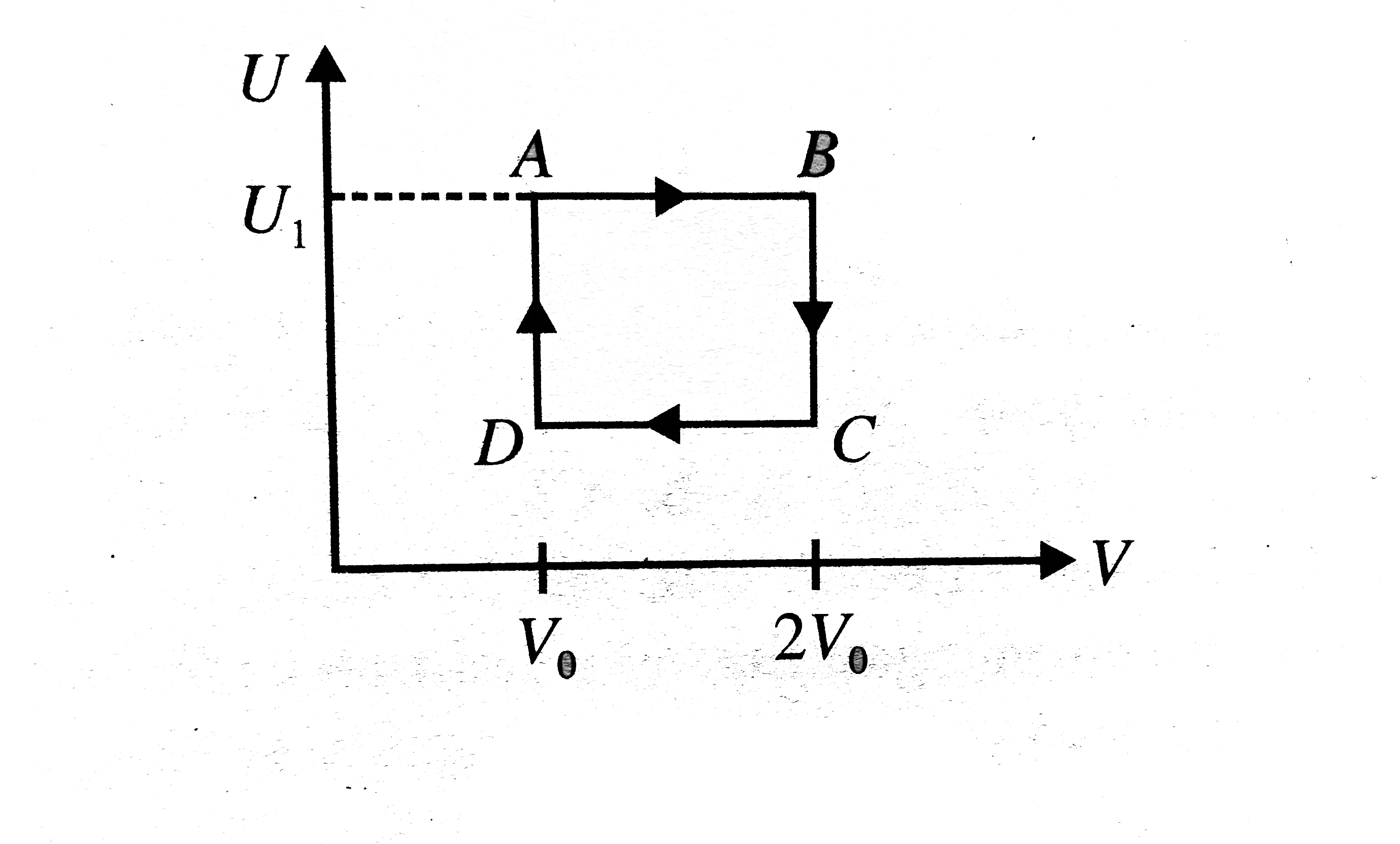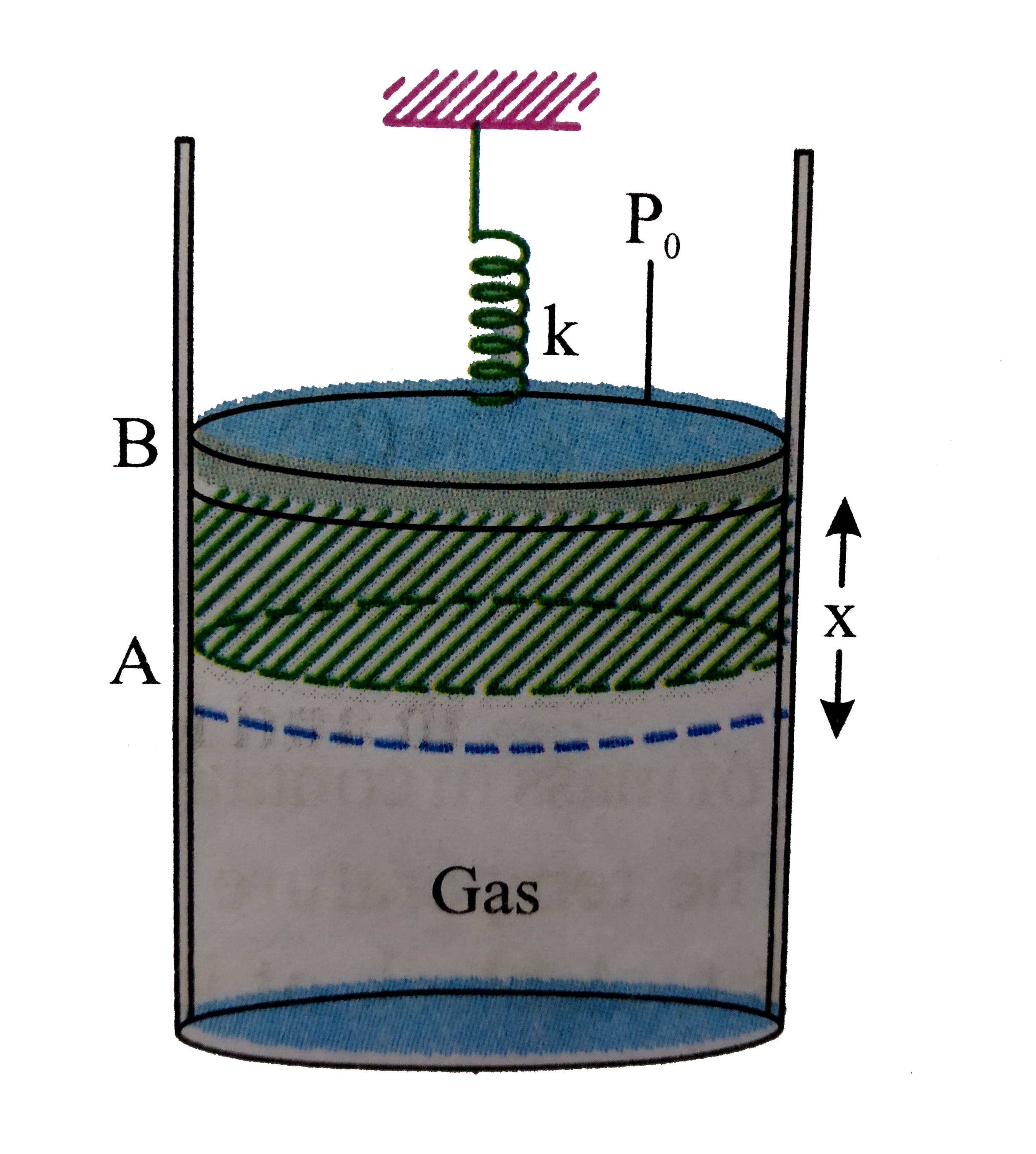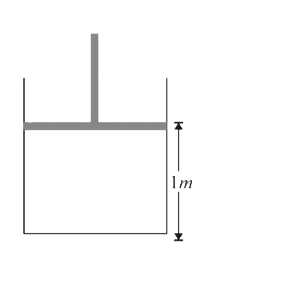A frictionless piston-cylinder based enclosure contains some amount of gas at a pressure of 400 kPa. Then heat is transferred to the gas at constant pressure in a quasi-static process. The piston moves up slowly through a height of 10 cm. If the piston has a cross-section area of 0.3 m2, the work done by the gas in this process is
6 kJ
12 kJ
7.5 kJ
24 kJ
The correct Answer is:B
To solve the problem, we need to calculate the work done by the gas when it expands against a piston at constant pressure. The work done by the gas can be calculated using the formula:
W=PΔV
Where:
- W is the work done,
- P is the pressure,
- ΔV is the change in volume.
Step 1: Identify the given values
- Pressure, P=400kPa=400×103Pa (since 1 kPa = 1000 Pa)
- Cross-sectional area of the piston, A=0.3m2
- Height moved by the piston, h=10cm=0.1m (since 1 cm = 0.01 m)
Step 2: Calculate the change in volume, ΔV
The change in volume can be calculated using the formula:
ΔV=A×h
Substituting the values:
ΔV=0.3m2×0.1m=0.03m3
Step 3: Calculate the work done, W
Now, we can substitute the values of pressure and change in volume into the work done formula:
W=PΔV
Substituting the values:
W=400×103Pa×0.03m3
Calculating this gives:
W=400×103×0.03=12,000J
Step 4: Convert work done to kilojoules
Since 1kJ=1000J:
W=12,000J1000=12kJ
Final Answer
The work done by the gas in this process is 12 kJ.
---
- W is the work done,
- P is the pressure,
- ΔV is the change in volume.
- Pressure, P=400kPa=400×103Pa (since 1 kPa = 1000 Pa)
- Cross-sectional area of the piston, A=0.3m2
- Height moved by the piston, h=10cm=0.1m (since 1 cm = 0.01 m)
The change in volume can be calculated using the formula:
Now, we can substitute the values of pressure and change in volume into the work done formula:
Since 1kJ=1000J:
The work done by the gas in this process is 12 kJ.
Topper's Solved these Questions
- THERMODYNAMICSBOOK - ERRORLESSCHAPTER - THERMODYNAMICSEXERCISE - NCERT BASED QUESTIONS (HEAT ENGINE, REFRIGERATOR AND SECOND LAW OF THERMODYNAMICS)
35 Videos
- THERMODYNAMICSBOOK - ERRORLESSCHAPTER - THERMODYNAMICSEXERCISE - PAST YEARS QUESTIONS
22 Videos
- THERMODYNAMICSBOOK - ERRORLESSCHAPTER - THERMODYNAMICSEXERCISE - NCERT BASED QUESTIONS (ADIABATIC PROCESS)
31 Videos
- SURFACE TENSIONBOOK - ERRORLESSCHAPTER - SURFACE TENSIONEXERCISE - ASSERTION & REASON
11 Videos
- THERMOMETRY, THERMAL EXPANSION AND CALORIMETRYBOOK - ERRORLESSCHAPTER - THERMOMETRY, THERMAL EXPANSION AND CALORIMETRYEXERCISE - ASSERTION & REASON
10 Videos
Similar Questions
A cylinder fitted with a spring loaded piston, shown in the figure, contains 0.01(m)3 gas at a pressure of 105Pa. The cross-sectional area of the piston is 0.05m2. Initially, the spring does not touch the piston but atmospheric pressure of 105Pa acts on the piston. The gas is slowly heated till the volume is increased to three times the original value. If the forcé constant of the spring is 25kNm, calculate the work done (in kJ ) by the gas.
'(##CEN_KSR_PHY_JEE_C15_E01_031_Q19##)'
View SolutionA cylinder fitted with a piston contains an ideal monoatomic gas at a temperature of 400K. The piston is held fixed while heat ΔQ is given to the gas, it is found the temperature of the gas has increased by 20K. In an isobaric process the same ΔQ heat is supplied slowely to it. Find the change in temperature in the second process?
View Solution
Knowledge Check
A frictionless piston-cylinder based enclosure contains some amount of gas at a pressure of 400 kPa. Then heat is transferred to the gas at constant pressure in a quasi-static process. The piston moves up slowly through a height of 10 cm. If the piston has a cross-sectional area of 0.3m2, the work done by the gas in this process is
A6kJB12kJC7.5kJD24kJOne mole of an ideal gas has an interal energy given by U=U0+2PV , where P is the pressure and V the volume of the gas. U0 is a constant. This gas undergoes the quasi− static cyclic process ABCD as shown in the U−V diagram.

The work done by the ideal gas in the process AB isAzeroBU1−U02CU0−U12DU0−U12loge2Two mole of an ideal monatomic gas are confined within a cylinder by a mass less spring loaded with a frictionless piston of negligible mass and crossectional area 4×10−3m2. The gas is heated by a heater for some time. During this time the gas expands and does 50J of work in moving the piston through a distance of 0.01m. The temperature of gas increases by 50k.

Heat supplied by heater during this process isA129.65JB1296.5JC12.96JD250J
An ideal gas in a cylindrical vessel is confined by a piston at a constant pressure of 105 Pa. When 2×104 J of heat is added to it,the volume of gas expands from 0.15m3 to 0.25m3.
What is the work done by the system in this process .
View SolutionA gas is enclosed in a cylindrical vessel fitted with a frictionless piston.the gas is slowly heated for some time. During the process, 10 J of heat is suopplied and the piston is found to move out 10cm. Find the increase in the internal energy of the gas , the area of cross section of the gas, the area of cross section of the cylinder=4 cm^(4) and the atmospheric pressure =100kPa.
View SolutionThe piston cylinder arrangement shown contains a diatomic gas at temperature 300 K The cross sectinal area of the cylinder is 1m2. Initially the height of the piston above th base of the cyclinder is 1 m. The temperature is now raised to 400 K at constant pressure. There is no heat loss in the process..

Find the new height (in m) of the piston above the base of the cylinder.
View Solution3 moles of an ideal gas are contained within a cylinder by a frictionless piston and are initially at temperature T . The pressure of the gas remains constant while it is heated and its volume doubles . If R is molar gas constant , the work done by the gas in increasing its volume is
View SolutionOne mole of an ideal gas is contained with in a cylinder by a frictionless piston and is initially at temperature T. The pressure of the gas is kept constant while it is heated and its volume doubles. If R is molar gas constant, the work done by the gas in increasing its volume is
View Solution
